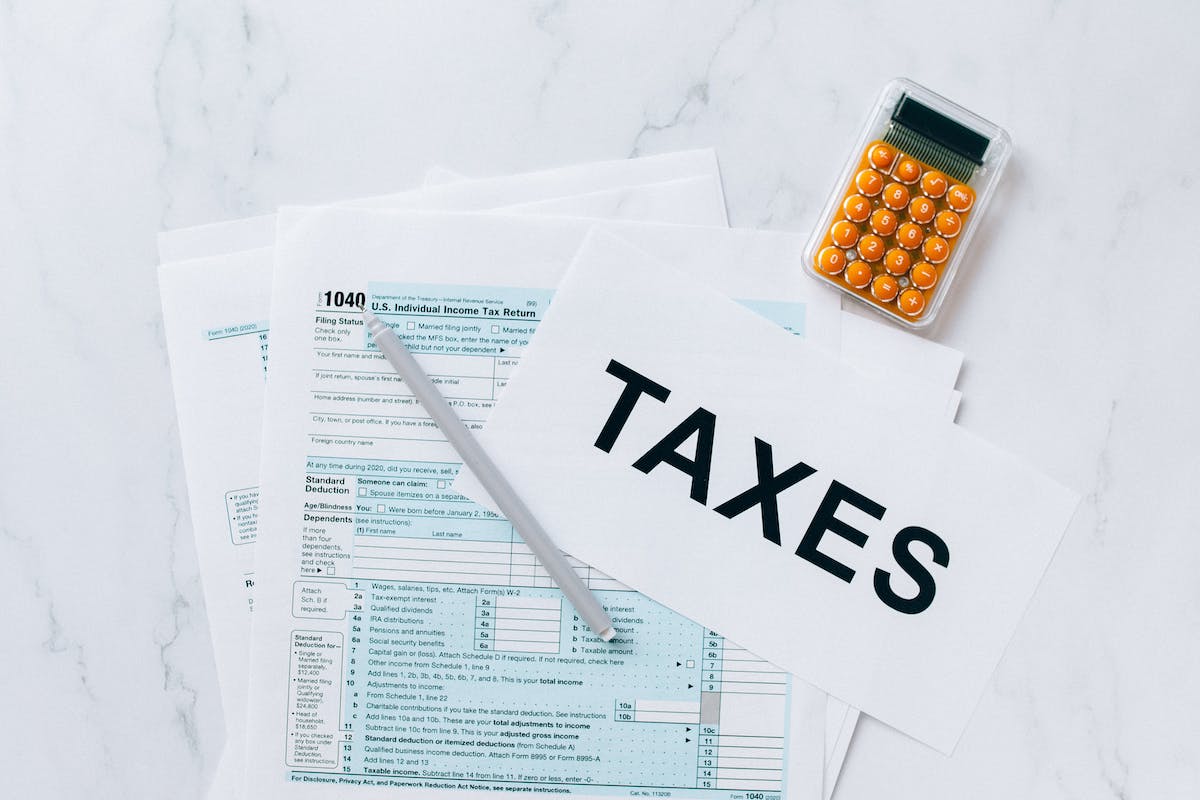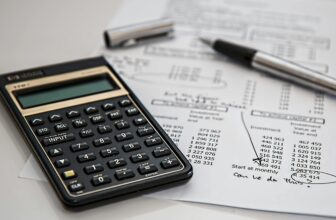
Deferred tax assets are kind of like IOUs, but in the world of taxes. They occur when a business has either paid more taxes than necessary or has reported a loss. Imagine you’re playing a board game and you get a card that says,
“Hey, you overpaid! You can use this credit in your next turn.”
That’s pretty much a deferred tax asset in the business world.
Types Of Deferred Taxes
When it comes to deferred taxes, it’s like looking at two sides of a coin. On one side, we have deferred tax assets, and on the other, deferred tax liabilities. Let’s explore these with some real-life examples.
1. Deferred Tax Assets Real Life Example
Imagine a company, let’s call it “Buzzy’s Bees,” which makes honey. One year, Buzzy’s Bees has a rough time due to bad weather and ends up with a loss. They can’t use all the tax deductions they’re entitled to because, well, their income isn’t high enough.
Here’s where deferred tax assets come into play. Buzzy’s Bees can carry forward these unused deductions to future years when they (hopefully!) make a profit. It’s like Buzzy’s Bees has a coupon for future tax savings.
2. Deferred Tax Liabilities Real Life Example
Now, let’s flip the coin. Deferred tax liabilities are the opposite. They happen when a company has to pay more taxes in the future due to temporary differences.
Let’s say there’s another company, “Gadget Corp.” Gadget Corp sells gadgets on credit. For accounting purposes, they recognize the revenue when the gadget is shipped, but for tax purposes, they recognize it when they actually get the cash. This timing difference means Gadget Corp might pay less tax now but will have to pay more later when the cash rolls in. That future tax bill? That’s a deferred tax liability.
Let’s break down the comparison between deferred tax asset vs liability:
| Aspect | Deferred Tax Assets | Deferred Tax Liabilities |
|---|---|---|
| Definition | Potential future tax benefits due to overpaid taxes or reported losses | Anticipation of higher future taxes due to temporary differences |
| Example | “Buzzy’s Bees” carrying forward unused tax deductions | “Gadget Corp” recognizing revenue for tax later when cash is received |
| Nature | Positive impact on future tax payments | Indicates future increase in tax payments |
| Calculation | Involves temporary differences between taxable and accounting income | Arises from timing differences, such as revenue recognition |
| Timing of Recognition | Recognized when there’s a high probability of future profitability | Arises when temporary differences lead to higher future taxable income |
| Benefits | – Potential tax savings in profitable years | – Can result in lower taxes in the present due to timing differences |
| Pros | – Boosts future cash flow | – Offers a temporary tax advantage in the present |
| Cons | – Requires future profitability to realize benefits | – Future tax payments may be higher than the current tax advantage |
| Impact on Financial Statements | Appears as an asset on the balance sheet, affecting the company’s valuation | Appears as a liability, potentially indicating future financial pressure |
Understanding the Deferred Tax Asset Journal Entry
When a company realizes it has a deferred tax asset, it needs to record this in its books. It’s like noting down a promise of future tax savings.
The Basic Formula
Here’s the simple formula for the journal entry:
- Debit (increase) Deferred Tax Asset: This goes on the balance sheet. It’s like saying, “Hey, we’ve got some tax savings coming in the future!”
- Credit (reduce) Income Tax Expense: This shows up on the income statement. It’s like adjusting your current tax expense because you’re expecting a discount down the road.
How To Calculate Deferred Taxes?
Calculating deferred taxes involves understanding the temporary differences between the taxable income and the accounting income, and then applying the appropriate tax rates. Let’s break it down in a way that feels like a friendly conversation:
Step 1: Identify Temporary Differences
Think of temporary differences as the little gaps between when something is recognized for tax purposes and when it hits the books. It could be timing differences in recognizing revenue, expenses, or depreciation.
Example: Imagine a company that uses accelerated depreciation for tax purposes but straight-line depreciation for accounting. That’s a temporary difference.
Step 2: Assign Tax Rates
Next up, you’ll need to know the tax rates. In the U.S., we have federal and state tax rates. Be sure to use the applicable rates for your specific scenario.
Example: Let’s say the federal tax rate is 21%, and the state tax rate is 5%. You’d use these rates in your calculations.
Step 3: Crunch the Numbers
Now, let’s do the math. The formula for calculating deferred taxes is:
Deferred Tax=Temporary Difference×Tax RateDeferred Tax=Temporary Difference×Tax Rate
Example: If your temporary difference is $10,000 and your combined tax rate is 26%, the deferred tax would be $10,000 \times 0.26 = $2,600.
Step 4: Record the Journal Entry
Once you’ve got your deferred tax amount, it’s time to jot it down in your financial diary (the accounting books). Debit the Deferred Tax Asset (or Liability) and credit Income Tax Expense.
Example: Using the $2,600 deferred tax from above, your journal entry would look like this:
- Debit Deferred Tax Asset: $2,600
- Credit Income Tax Expense: $2,600
Conclusion
Understanding deferred taxes is all about looking at the future – either savings or bills that are waiting down the line due to differences in how and when income and expenses are recognized. Just like in life, in business, timing can make a big difference.
And there you have it! Deferred taxes might sound complex at first, but they’re really just about understanding how a business’s actions today can affect its tax bill tomorrow. It’s like planting a garden or saving up coupons – it all depends on planning for the future! Keep this in mind, and you’ll start to see these concepts popping up all around in the business world. Happy learning!
References
To delve deeper and verify information about deferred taxes, it’s always a good idea to consult authoritative and reliable sources. Here are a few reputable websites and resources where readers can find more information:
- Internal Revenue Service (IRS)
- Website: irs.gov
- Financial Accounting Standards Board (FASB)
- Website: fasb.org
- U.S. Securities and Exchange Commission (SEC)
- Website: sec.gov
- Investopedia
- Website: investopedia.com
- AccountingTools
- Website: accountingtools.com
Frequently Asked Questions (FAQs) on Deferred Tax Assets
Q1. What is an example of a deferred tax asset?
Example: Imagine a company, “Cozy Comforts,” reports a net loss this year. They can’t use all their tax deductions right away. So, they get a deferred tax asset – a bit like a voucher for future tax savings. This asset represents the tax benefits they can use in profitable years ahead.
Q2. How do you record a deferred tax asset?
To record a deferred tax asset, you make a journal entry:Debit Deferred Tax Asset (increasing it on the balance sheet)
Credit Income Tax Expense (reducing it on the income statement)
It’s like noting down a promise of future tax benefits in your financial diary.
Q3. What is the difference between current tax assets and deferred tax assets?
Current tax assets are like immediate tax refunds you expect to get soon, within a year. Deferred tax assets are more like future tax discounts, expected to be realized beyond the current year. It’s the timing that differentiates them.
Q4. Why is deferred tax asset a non-current asset?
A deferred tax asset is often a non-current asset because it represents future tax savings, usually expected to be realized after more than one year. It’s like planning for a big holiday next year, rather than a weekend getaway this month.
Q5. How do you calculate tax deferred?
To calculate deferred taxes, use this formula:
Deferred Tax = Temporary Difference × Tax Rate
It’s like calculating how much tax you’ll defer to future periods based on current differences in accounting and tax treatments.
Q6. What is an example of a deferred tax asset?
Another Example: “Sunny Solar” incurs high upfront costs in Year 1, leading to a tax loss, but expects profits in Year 2. The tax loss carryforward creates a deferred tax asset, as it’ll reduce taxes in profitable Year 2.
Q7. What is the deferred tax asset amount?
The amount of a deferred tax asset depends on the expected future benefits in terms of tax savings. It’s calculated based on temporary differences and tax rates, similar to setting aside a portion of your income, expecting future benefits.
Q8. What is valuation of deferred tax assets?
Valuing deferred tax assets involves assessing the likelihood of future profits to utilize these tax benefits. It’s a bit like appraising a piece of art – the value depends on future expectations, in this case, the company’s profitability.







